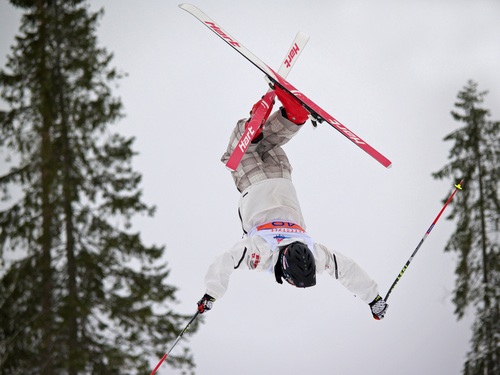This came to my inbox Friday and I found it entertaining and insightful. Written by Donald Mango, chief actuary at Guy Carpenter, this fun read explores the risk management lessons from the recent winter Olympics.
We were all thrilled with the spectacle of the just-completed 2010 Olympic Winter Games from Vancouver. Winter sports are known for their inherent high levels of riskiness, so it should not be too surprising that some valuable lessons related to “personal risk management behavior” can be drawn from the way the athletes make decisions and how the competitions are conducted and judged. As risk professionals, when we watch the action on the snowy mountains and icy rinks, we can get another view on the choices made in the taking of risk or in mitigating risk. Here are just a few lessons that offer additional insights:
- Risk reward tradeoff in men’s figure skating. The most notable example being the quadruple jump. The new scoring system provides more points for a successful quadruple jump than, for example, a triple axel. The number of additional points, however, is marginal. Most skaters felt the additional reward did not match the increased risk of failing to execute the more difficult jump. Gold medalist Evan Lysacek opted not to do it, much to the chagrin of silver medalist Evgeni Plushenko, who did put in a quad. The lesson here: the scoring system drives behavior.
- Peer pressure leading to excessive risk taking in freestyle ski moguls and downhill ski. In order to contend for a medal in moguls, skiers needed to balance high speeds, precise turns and spectacular jumps. One skier’s results could lead subsequent skiers to modify jump choices or speed based on what they perceived to be necessary to win a medal. We also saw this in the women’s downhill, where eventual gold medalist Lindsey Vonn’s impressive time had two knock-on effects. First, many of the skiers who followed her crashed in their effort to match her time. Then the final skier, Maria Riesch of Germany, a gold medal favorite, was so intimidated by the crashes that she skied tentatively to an eighth place finish. The lesson: peer behavior can lead to excessive risk taking.
- Judging risk-based performance in freestyle ski moguls. Judges need to essentially quantify the qualitative. Judgment decisions are based on a combination of speed measurement (objective), turning quality (subjective), and aerials (subjective and objective).
buy lipitor online https://galenapharm.com/pharmacy/lipitor.html no prescription
Assessment of aerials is based on the execution of the chosen trick. Each trick has an assigned degree of difficulty, and the overall weighting among the three categories is set beforehand. This provides a good framework for making risk preference / appetite decisions. Choose a set of independent factors, measure what can be measured (speed) or adopt a scale. For scaled factors, use multiple assessments (judges) and hedge against outliers (average the scores of multiple judges). Also, regularly review the scoring to ensure appropriateness and get feedback.
The lesson: we CAN develop a scientific system for making decisions using expert judgment.
Sports provide us with benchmarks, analogues and evidence to illuminate the way the human mind deals with risk and reward. Applying this understanding to the rationale for companies’ risk decisions demonstrates that some actions may not be in the companies’ best interests. They may be driven by pressures to “perform” and to “follow the pack.
” We were all thrilled with the spectacle of the just-completed 2010 Olympic Winter Games from Vancouver.
Risk reward tradeoff in men’s figure skating. The most notable example being the quadruple jump. The new scoring system provides more points for a successful quadruple jump than, for example, a triple axel. The number of additional points, however, is marginal. Most skaters felt the additional reward did not match the increased risk of failing to execute the more difficult jump. Gold medalist Evan Lysacek opted not to do it, much to the chagrin of silver medalist Evgeni Plushenko, who did put in a quad. The lesson here: the scoring system drives behavior.
Peer pressure leading to excessive risk taking in freestyle ski moguls and downhill ski. In order to contend for a medal in moguls, skiers needed to balance high speeds, precise turns and spectacular jumps. One skier’s results could lead subsequent skiers to modify jump choices or speed based on what they perceived to be necessary to win a medal. We also saw this in the women’s downhill, where eventual gold medalist Lindsey Vonn’s impressive time had two knock-on effects. First, many of the skiers who followed her crashed in their effort to match her time. Then the final skier, Maria Riesch of Germany, a gold medal favorite, was so intimidated by the crashes that she skied tentatively to an eighth place finish. The lesson: peer behavior can lead to excessive risk taking.
Judging risk-based performance in freestyle ski moguls. Judges need to essentially quantify the qualitative. Judgment decisions are based on a combination of speed measurement (objective), turning quality (subjective), and aerials (subjective and objective). Assessment of aerials is based on the execution of the chosen trick. Each trick has an assigned degree of difficulty, and the overall weighting among the three categories is set beforehand. This provides a good framework for making risk preference / appetite decisions. Choose a set of independent factors, measure what can be measured (speed) or adopt a scale. For scaled factors, use multiple assessments (judges) and hedge against outliers (average the scores of multiple judges). Also, regularly review the scoring to ensure appropriateness and get feedback. The lesson: we CAN develop a scientific system for making decisions using expert judgment.
Sports provide us with benchmarks, analogues and evidence to illuminate the way the human mind deals with risk and reward. Applying this understanding to the rationale for companies’ risk decisions demonstrates that some actions may not be in the companies’ best interests. They may be driven by pressures to “perform” and to “follow the pack.”

 DENVER—When RIMS keynote speaker Bonnie St. John was five years old her right leg was amputated below the knee because of a medical condition. For most people, it would have been a devastating disability, but St.John was not most people. Instead she became, of all things, a competitive skier. As a member of the 1984 U.S. Paralympic team, she was the first African-American to win an Olympic medal as a ski racer, taking home bronzes for slalom and giant slalom and a silver for overall performance. In effect, she said that made her the second fastest woman on one leg that year.
DENVER—When RIMS keynote speaker Bonnie St. John was five years old her right leg was amputated below the knee because of a medical condition. For most people, it would have been a devastating disability, but St.John was not most people. Instead she became, of all things, a competitive skier. As a member of the 1984 U.S. Paralympic team, she was the first African-American to win an Olympic medal as a ski racer, taking home bronzes for slalom and giant slalom and a silver for overall performance. In effect, she said that made her the second fastest woman on one leg that year.
